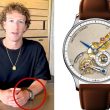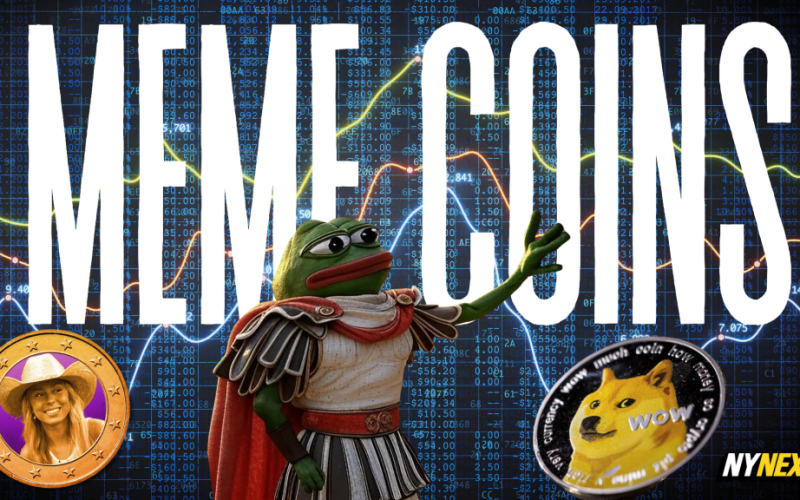Within hours of Elon Musk changing his X handle to ‘Kekius Maximus’ on New Year’s Eve — a reference to an previously obscure cryptocurrency – its value rocketed 4,800% to hit a market cap of $380 million.
It was just the latest so-called meme coin — a cryptocurrency based on a meme or cultural event such as like Dogecoin, Shiba Inu, or Pepe the Frog — to spike and then, seemingly inevitably, fall (or completely tank) in a matter of hours.
Some skeptical financial gurus have called meme coins a Ponzi scheme, arguing they have no underlying value and attract people with little financial experience who then lose their money.
However, savvy smaller investors and investment funds haven’t been so quick to write them off, poured millions into the space — and reaped impressive returns for doing so.
The meme coin sector is estimated to have jumped from a value of $20 billion in January 2024 to more than $120 billion by the end of 2024, according to market analysts.
Laurent Parmentier, a partner at crypto investment fund Stratos, which has gotten backing from Andreessen Horowitz, told The Post a fund they launched in 2023 that specifically invests in meme coins has dwarfed more traditional investments.
“I think we are only going to see more and more sophisticated investors… crypto is the best performing asset class in the world and meme coins have been the best performing subsection,” Parmentier said.
Referring to one of 2024’s best performing traditional stocks, he added: “Nvidia returns pale in comparison to returns if you’re early in some meme coins… we made 300x our money.”
Parmentier explains that meme coins are a way to celebrate and gain more attention to cryptocurrency and its culture — and reward investors for doing so, as long as they pick the right coin.
“If you thought about ‘how do I benefit financially from Peanut?’ [a reference to a meme coin based around a New York State pet squirrel who made headlines after being forcibly removed from his owners and destroyed], you would have made a lot of money,” Parmentier added.
Aulden Borthwick, an NYU undergraduate who invests in meme coins, explains the quick returns they make are especially appealing to his generation, saying, “People are frustrated with how they are treated as a traditional investor… large investors can dump on the traditional investors.”
“But with enough time and effort someone can come into big money with a new coin launch,” he explains. “It provides real agency to the average investor.”
And there are quite a few mind-numbing stories to illustrate the point — one person who invested just $66 in Kekius Maximus saw their investment balloon to almost $3m. They sold off $201,000 worth and held onto $2.85M, according to Cointelegraph.com
The first popular meme coin, Dogecoin, was created in 2013 and features a Shiba Inu dog, a popular meme at the time. While initially seen as a satire on Bitcoin and other cryptocurrencies, after Musk began posting about it the coin surged in value. It has since maintained its value and become one of the more stable crypto currencies.
ith the creation of the Department of Government Efficiency [DOGE] — a subtle nod to Dogecoin — headed by Musk and Vivek Ramaswamy, the meme coin has officially entered mainstream society.
And coin watchers say this is testament to the relevance of memes and crypto — and expect digital currency to surge in the coming months with the election of Donald Trump, who has been the most pro-crypto president of all time.
“No one understands how significant it becomes in the cultural zeitgeist,” Borthwick adds. “So many large investors view it as, ‘this is stupid and all these retail investors are going to lose all their money,’ but I think it has the ability to inform culture.”
Cryptocurrency analyst at GSR Research, Toe Bautista, warns the overwhelming majority of bets on meme coins are complete speculation — but also sees how people are engaged and interested in crypto culture, which had a strong year in 2024, with values of the most popular crypto currencies soaring, including Bitcoin briefly being worth over $100,000 per coin.
“When Bitcoin goes up, meme coins further down [the chain, with more risk] go up,” Bautista adds. “Investors are curating what they think the future looks like… the capital is chasing it.”
Of course, there are far more losers than winners when it comes to meme coins.
One now infamous example of a meme coin disaster is the “$HAWK Token” from the so-called Hawk Tua girl Hailey Welch who became famous after a video clip of her went viral last summer.
The coin surged to $490M on launch day but within minutes fell to under $100M. Just a month after its December launch it has a market cap of just $39,760, making it virtually worthless.
The team behind the coin is now facing scrutiny from the Securities and Exchange Commission and a class action lawsuit from angry investors who lost money and feel cheated.
Other investors say there is potential for meme coins to be combined with artificial intelligence and become an entirely new type of currency. One recent AI generated meme coin, GOAT, hit a market cap of $800 million in November just weeks after launching.
Courtland Leer, Founder of Plastic Labs — a company whose technology has inspired a viral meme coin — told The Post the attention such crypto currencies are generating show the industry is here to stay.
“Capital follows attention,” he explains. “Something sticks and it becomes the seed for the next cycle.”
This story is part of NYNext, a new editorial series that highlights New York City innovation across industries, as well as the personalities leading the way.








